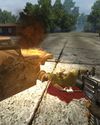
If we learned nothing else from Naughty Dog’s PC version of The Last of Us Part 1, we now know that in the year 2023 it’s still eminently possible to mess up a videogame port. We can run the global economy on a decentralised blockchain and climb mountains in photorealistic VR, but good luck getting TLOU to build its shader cache before Steam’s refund window expires.
Prior to that release, you could have been forgiven for thinking the days of borked PC ports were basically behind us. It was absolutely de rigueur throughout the ’90s and ’00s for a critically adored console game to turn up in mangled and mutilated form, and as recently as Dark Souls’ PC arrival in 2012 we were disappointed but far from surprised by a locked 720p resolution and 30fps frame rate.
But things were on the up. Console architecture was coming slightly closer in line with a PC’s componentry ecosystem by the advent of the PS4 and Xbox One, the latter using Microsoft’s DirectX API and both using an eight-core AMD Jaguar APU that bore some similarities to the Ryzen chips found in gaming PCs. And anecdotally, that seemed to be making life easier for the developers of 2013 than it was for their ancestors circa 2003 who were charged with getting the complex infrastructure of lolly sticks and elastic bands inside PS2s and Xboxes to power virtual worlds, and then translate all that over to beige boxes.

REEL GOOD
WEBFISHING is a fantastic throwback to old-school chatroom games

RIVALS ASSEMBLE
MARVEL RIVALS' chaotic fun may be short-lived

STALKER 2
Make the hostile Zone a little more friendly with mods.

MONSTER HUNTER WILDS
With Wilds, Monster Hunterflaunts new storytelling chops

BLENDING IN WITH THE LIVING IN DIVINITY: ORIGINAL SIN 2 PART 1
Can the long-dead Mister Fibula pass himself off as a regular joe? Probably not...

MARVEL'S SPIDER-MAN 2
Is there anything better than a Spidey sequel to start 2025?

LOVE'S LABOURS LIBRARY
Building a library with BALDUR'S GATE III's foremost librarian

TRIGGER HAPPY PC
The rise and fall of the joystick

GREEN AID MONSTER
Jensen Huang says Al's essential for graphics. What does that mean for gamers?

SNUG LIFE
Cosy games have escaped the farm to become a huge-selling genre of their own